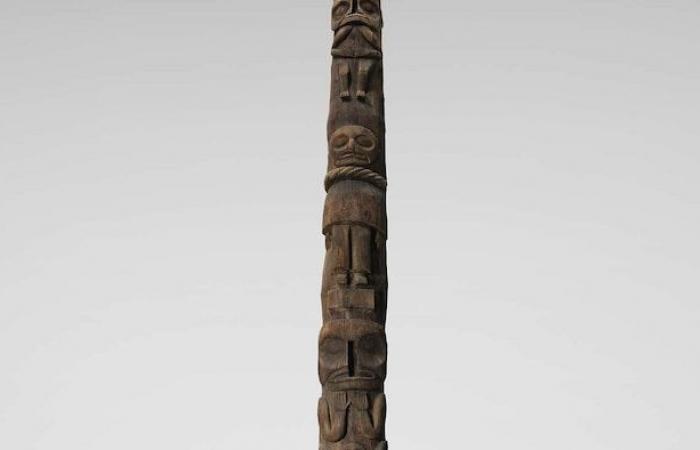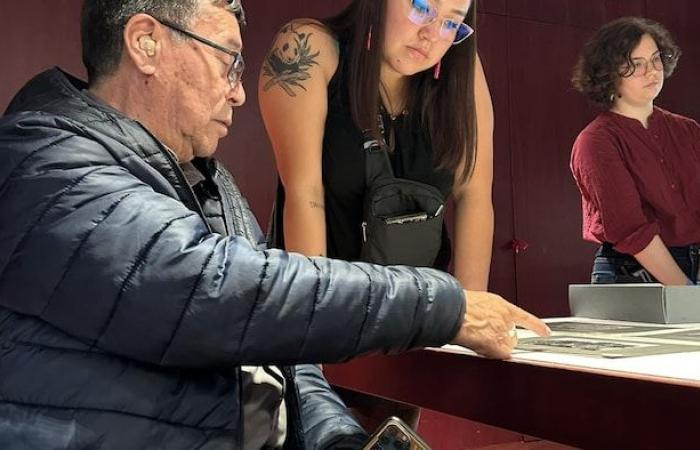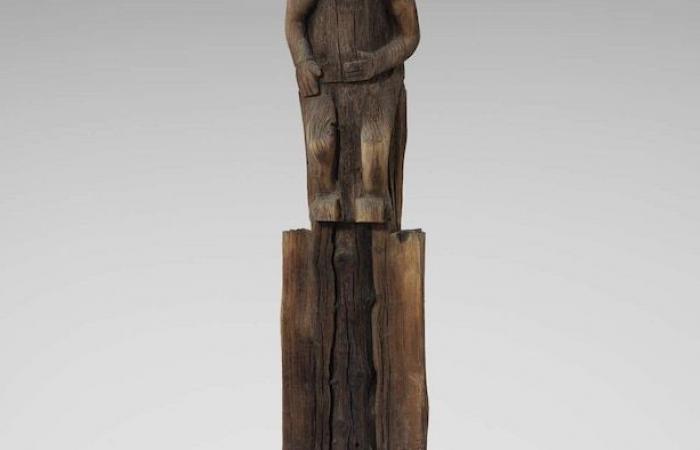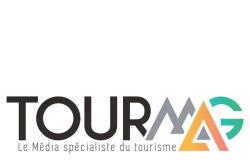Last month, a Wet’suwet’en delegation discovered the K’ëgit totem for the first time, on display at the Quai Branly – Jacques Chirac Museum in Paris. This totem, sculpted in the 19th century, was sold in 1938 to the surrealist artist Kurt Seligmann.
It’s hard to describe what it feels like, it’s very moving to see it for the first time
explains Hagwilnekhlh Ron Mitchell, head of the C’inegh Lhay Yikh House (House of Many Eyes) of the Likhsilyu (Little Frog) clan.
Open in full screen mode
The K’ëgit totem in its entirety. It measures approximately 16m high and comes from the village Tsë Cakh (Hagwilget). It was carved in the 19th century.
Photo: Photo provided by the Quai Branly Museum – Jacques Chirac
During the visit, the delegation held a private ceremony, after the museum closed, to intimately reconnect with their cultural heritage.
The first thing that came to mind was my great-grandmother… She probably saw this flagpole [totémique].
I had trouble starting the ceremony
admits Chief Mitchell, adding that it’s not just a piece of wood, it’s a piece of history
. He imagines the sadness the community felt when the totem was removed and sent elsewhere.
Joanne Connauton, a doctoral student in human geography at the Florida State University and member of the Anishnabe Nation helped the delegation travel to Paris. She claims that it was a moving experience
.
Some spoke of reunion with a lost family member
she explains.
Someone abandoned, if you will, in this other part of the world, with no connection to where they come from or to their people.
The delegation visited the totem three times and was also able to consult archives including photographs showing how the totem was extracted and some had the opportunity to find out more about their family.
Several people in the delegation recognized members of their family, and for some they had never seen photos of these people
explains Ms. Connauton.
Open in full screen mode
Hagwilnekhlh Chief Ron Mitchell shows photos from the archives to a member of the delegation.
Photo: Photo provided by Helen Harris
A purchase that raises questions
The delegation raised questions about the circumstances that led the totem to Paris, saying it may have been sold, for $100, under pressure from authorities at the time, however, at present, no documents can certify it. Chief Mitchell recalls, however, that the sale takes place in a context of colonization
.
Back in Canada, the delegation discussed the healing process that visiting the totem pole created and the next steps.
We believe the totem pole should return here, but it won’t happen overnight
notes Chief Mitchell, mentioning the need to include the provincial, federal and French governments.
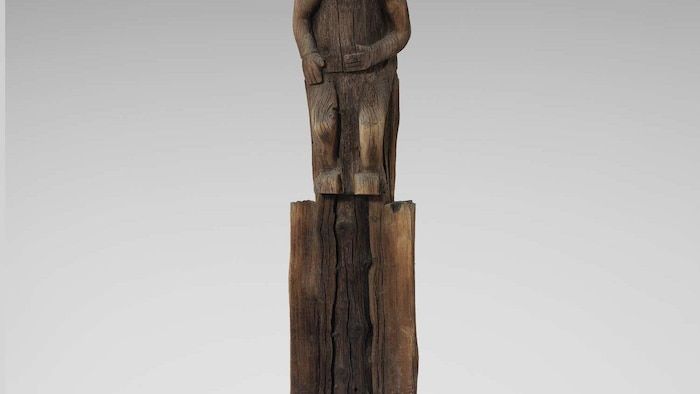
Open in full screen mode
The top of the K’ëgit totem.
Photo: Photo provided by the Quai Branly Museum – Jacques Chirac
A restitution discussion
According to the chief, the possibility of sending Indigenous students there every year is under discussion.
Joanna Connauton notes that the idea is to share this knowledge with schools, in order that it is not only a healing for the Wetsuwet’en, but also a healing for [aider] the relationships between [les communautés]
.
The museum, for its part, says it wants develop partnerships with communities
where their works come from and has set up a project with the objective of connect their collection with the nations that produced them
.
As for the restitution of the objects, the museum indicates that the question is a matter for the state
and that their role is to welcome communities, develop transparency and share data, while explaining possible approaches
.
With information from Rudy Dejardins

